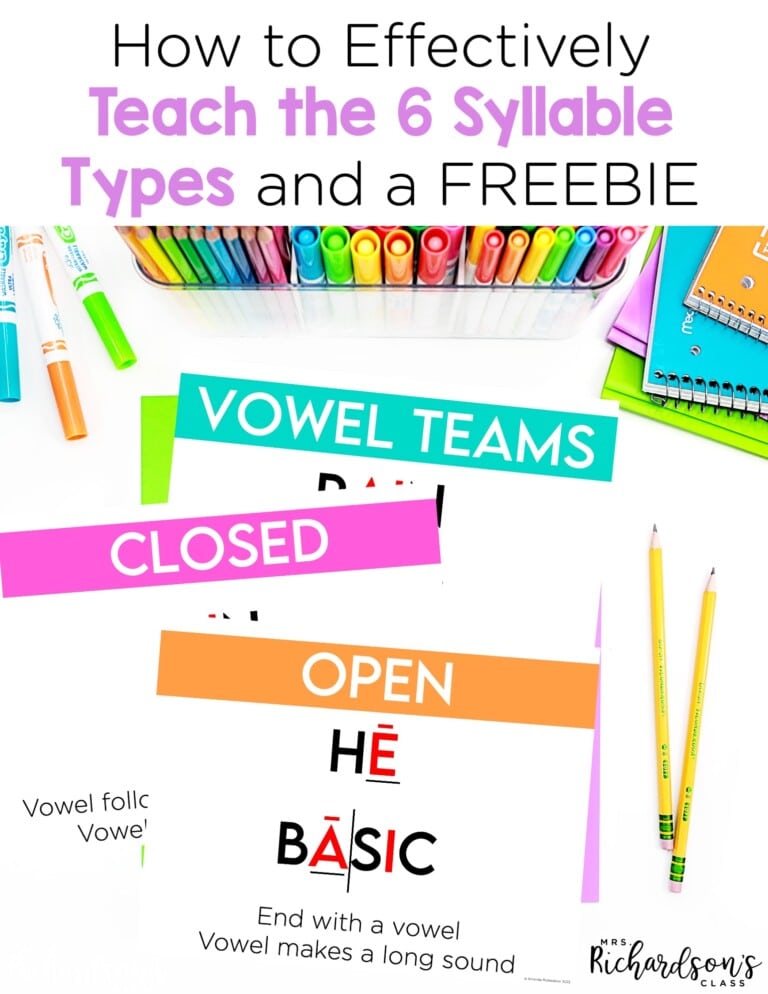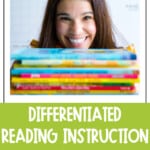

When I was in the classroom, I always wanted to help meet each student where they were and move them forward in reading and writing. We all do, right? But there is so much to get done in one school day. It often feels like there’s too much to do and not enough time. I always tried to figure out a way to get the most bang for my buck with every lesson I did. When it came to read alouds, I quickly learned that differentiated reading instruction through read alouds was the way to go.
You can do so much through one simple mentor text or read aloud. You can pack in reading comprehension, fluency, reading strategies, and even writing into your lessons, all while your students enjoy listening to a book. Today, I’ll show you how you can use differentiated reading instruction with read alouds to reach every reader and move them forward.
Differentiate the level of questioning based on students’ reading abilities and comprehension skills. Provide lower-level questions for striving readers while challenging advanced readers with higher-order thinking questions. This allows all students to participate actively and feel successful in their contributions. It also allows you to informally assess comprehension.
Scaffolding involves providing appropriate support to students as they engage with the text, gradually reducing assistance as their skills develop. By adjusting the level of scaffolding, you can meet the unique needs of each learner. You can do this by using visual cues, providing sentence starters, or use guiding questions that increase in complexity.
Model the thinking process by verbalizing your thoughts and reflections while reading. This helps students understand how proficient readers engage with texts, making it easier for struggling readers to comprehend and follow along.
Use visual aids, such as graphic organizers or anchor charts, to support comprehension. Visuals can be especially beneficial for visual learners or students who may struggle with language processing. I also love to use visual aids when I’m teaching new vocabulary with read alouds.
Another way to demonstrate differentiated reading instruction is to extend your read aloud through a writing response. Before, during, or after reading, you can ask students to record their thinking on a specific skill. For example, you can have students write down their predictions and extend that by asking students to explain why they think that with textual evidence.
If you’re ready to make differentiated reading instruction super easy, I have the solution for you! The Read Aloud Library brings read aloud lessons and activities like vocabulary activities, crafts, and writing response activities, right to you!
No more wondering if the book you found will work for the reading strategy you wanted. No more flipping through pages of countless books to make sure it’s on your students’ listening level. I’ve done all the work for you! Just hit print and you’ll be totally set for your read aloud lessons.
Each month with your membership, you’ll get 20 days of lessons and activities to support your readers.
With your membership, each month you’ll receive:
Ready to learn more about The Read Aloud Library or sign up? Click HERE! I’d love to walk you through everything you’ll get! I can’t wait to save you time and get these effective lessons in your hands.

Want to use the latest research to boost your readers during small groups? This FREE guide is packed with engaging ideas to help them grow!

I’m a K-1 teacher who is passionate about making lessons your students love and that are easy to implement for teachers. Helping teachers like you navigate their way through their literacy block brings me great joy. I am a lifelong learner who loves staying on top of current literacy learning and practices. Here, you’ll find the tools you need to move your K-2 students forward!


| Cookie | Duration | Description |
|---|---|---|
| cookielawinfo-checkbox-analytics | 11 months | This cookie is set by GDPR Cookie Consent plugin. The cookie is used to store the user consent for the cookies in the category "Analytics". |
| cookielawinfo-checkbox-functional | 11 months | The cookie is set by GDPR cookie consent to record the user consent for the cookies in the category "Functional". |
| cookielawinfo-checkbox-necessary | 11 months | This cookie is set by GDPR Cookie Consent plugin. The cookies is used to store the user consent for the cookies in the category "Necessary". |
| cookielawinfo-checkbox-others | 11 months | This cookie is set by GDPR Cookie Consent plugin. The cookie is used to store the user consent for the cookies in the category "Other. |
| cookielawinfo-checkbox-performance | 11 months | This cookie is set by GDPR Cookie Consent plugin. The cookie is used to store the user consent for the cookies in the category "Performance". |
| viewed_cookie_policy | 11 months | The cookie is set by the GDPR Cookie Consent plugin and is used to store whether or not user has consented to the use of cookies. It does not store any personal data. |


